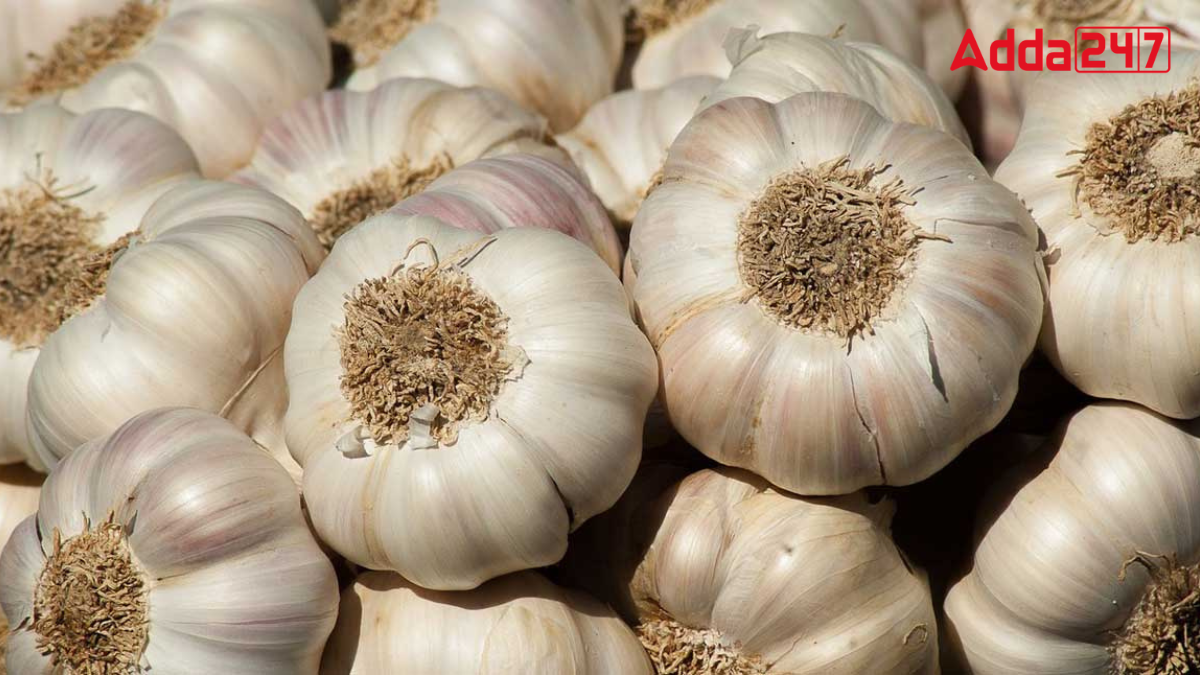Garlic is an essential ingredient in Indian cuisine, known for its distinct flavor and numerous health benefits. In India, Madhya Pradesh stands out as the largest garlic-producing state, contributing significantly to the country’s garlic supply. This article explores various aspects of garlic production in Madhya Pradesh, from its cultivation practices to its impact on the local economy.
Garlic Production in India
India produced over 3.1 million metric tons of garlic, making it one of the largest garlic producers globally. This impressive output is driven by states like Madhya Pradesh, Gujarat, and Rajasthan, which have favorable climatic conditions and dedicated farming practices. The robust production supports domestic consumption and export, significantly contributing to the agricultural economy.
Largest Garlic Producing State in India
Madhya Pradesh is the largest garlic-producing state in India, contributing significantly with a production of 2,016.13 metric tons. This substantial output underscores the state’s prominence in the garlic production landscape, driven by favorable climatic conditions, rich soil, and advanced farming practices. Madhya Pradesh’s contribution is crucial to meeting both domestic and international garlic demand.
Climate and Soil Conditions of Madhya Pradesh
Madhya Pradesh boasts a climate and soil that are highly conducive to garlic cultivation. The state’s semi-arid to sub-humid climate, with moderate temperatures and well-distributed rainfall, creates an ideal environment for garlic farming. The loamy and alluvial soils prevalent in the region are rich in nutrients and offer good drainage, which is crucial for healthy garlic bulb development.
Major Garlic Growing Regions
In Madhya Pradesh, several districts are renowned for their garlic production. These include:
- Neemuch: Known as the garlic hub of India, Neemuch produces a significant portion of the state’s garlic. The district’s farmers have perfected cultivation techniques over generations, resulting in high-quality produce.
- Mandsaur: Another prominent garlic-growing region, Mandsaur, is celebrated for its robust garlic yields. The local agricultural practices and government support have played a vital role in enhancing production.
- Ratlam: Ratlam is also a key contributor to Madhya Pradesh’s garlic output. The district’s farmers have adopted modern farming methods, boosting both the quantity and quality of garlic produced.
Economic Impact
Garlic cultivation has a profound economic impact on Madhya Pradesh. It provides livelihood opportunities for thousands of farmers and contributes to the state’s agrarian economy. The high demand for garlic in both domestic and international markets ensures a steady income for growers. Additionally, the state government and various agricultural organizations offer support through subsidies, training programs, and access to modern farming equipment.
Challenges and Future Prospects
Despite its success, garlic production in Madhya Pradesh faces several challenges, including:
- Climate Variability: Unpredictable weather patterns can affect crop yields.
- Pest and Disease Outbreaks: Farmers must constantly combat threats from pests and diseases.
- Market Fluctuations: Price volatility in the garlic market can impact farmers’ earnings.
To address these challenges and ensure sustainable growth, the focus must be on:
- Research and Development: Investing in research to develop disease-resistant and high-yielding garlic varieties.
- Training and Education: Providing farmers with training on advanced cultivation techniques and pest management.
- Infrastructure Development: Improving storage and transportation facilities to reduce post-harvest losses.




 World’s 10 Richest Families in 2025: Top...
World’s 10 Richest Families in 2025: Top...
 Which is the Oldest Rainforest on the Ea...
Which is the Oldest Rainforest on the Ea...
 Narpuh Wildlife Sanctuary: Conservation ...
Narpuh Wildlife Sanctuary: Conservation ...







